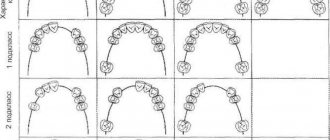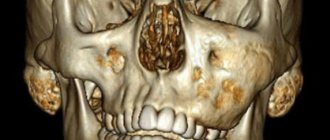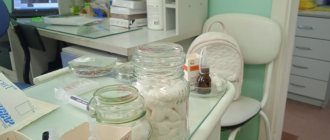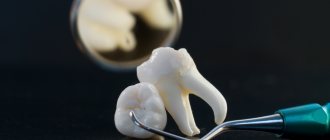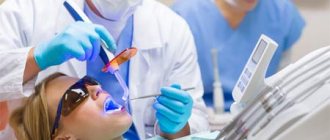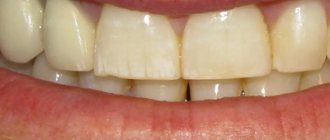1. Synonyms with string. 2. . 3. “Doctor” sentences. 4. Meaning of the word. 5. Antonyms for “doctor”. 6. Printing, . 7. Rhymes. 8. “Doctor” associations. 9. Analysis of the “doctor” composition. 10. Find more synonyms by clicking on words.
| № | Synonym | Initial form | Frequency |
| 1 | doctor (60) | doctor | 143.1 |
| 2 | operator (36) | operator | 40.9 |
| 3 | psychologist (32) | psychologist | 29.3 |
| 4 | surgeon (25) | surgeon | 22.1 |
| 5 | diagnostician (53) | diagnostician, diagnostics | 15.2 |
| 6 | white robe (11) | 14.1932 | |
| 7 | medic (25) | medic | 13.7 |
| 8 | psychiatrist (14) | psychiatrist | 9.3 |
| 9 | sculpted (11) | sculpt | 8.2 |
| 10 | paramedic (18) | paramedic | 6.4 |
| 11 | head physician (4) | head physician | 4.8 |
| 12 | veterinarian (9) | vet | 4 |
| 13 | gynecologist (9) | gynecologist | 3.7 |
| 14 | healer (25) | doctor | 3.5 |
| 15 | therapist (10) | therapist | 2.6 |
| 16 | dentist (23) | dentist | 2.5 |
| 17 | psychotherapist (4) | psychotherapist | 2.5 |
| 18 | doctor (6) | doctor | 2.4 |
| 19 | psychoanalyst (3) | psychoanalyst | 2.4 |
| 20 | scalpel (7) | scalpel | 2.3 |
| 21 | cosmetologist (7) | cosmetologist | 2.3 |
| 22 | neurologist (3) | neurologist | 1.9 |
| 23 | healer (29) | healer | 1.9 |
| 24 | pediatrician (5) | pediatrician | 1.9 |
| 25 | military doctor (1) | military doctor | 1.7 |
| 26 | pathologist (9) | pathologist | 1.6 |
| 27 | dentist (16) | dentist | 1.5 |
| 28 | core (12) | core | 1.5 |
| 29 | medicine man (59) | witch doctor, witch doctor | 1.4 |
| 30 | doctor (19) | heal | 1.4 |
| 31 | narcologist (2) | expert in narcology | 1.1 |
| 32 | Aesculapius (19) | Aesculapius | 1.1 |
| 33 | cardiologist (3) | cardiologist | 1.1 |
| 34 | sexologist (3) | sexologist | 1.1 |
| 35 | anesthesiologist (2) | anesthetist | 1 |
| 36 | pharmacist (7) | pharmacist | 1 |
| 37 | medical worker (3) | 0.90643 | |
| 38 | endocrinologist (1) | endocrinologist | 0.9 |
| 39 | sex therapist (2) | sex therapist | 0.8 |
| 40 | ophthalmologist (5) | ophthalmologist | 0.8 |
| 41 | urologist (3) | urologist | 0.8 |
| 42 | obstetrician (9) | obstetrician | 0.8 |
| 43 | external (4) | external | 0.8 |
| 44 | veterinarian (4) | veterinarian | 0.7 |
| 45 | ophthalmologist (8) | ophthalmologist | 0.7 |
| 46 | dermatologist (5) | dermatologist | 0.7 |
| 47 | speech therapist (8) | speech therapist | 0.7 |
| 48 | nutritionist (3) | nutritionist | 0.7 |
| 49 | liar (32) | liar | 0.6 |
| 50 | orthopedist (2) | orthopedist | 0.6 |
| 51 | oncologist (1) | oncologist | 0.6 |
| 52 | neurosurgeon (1) | neurosurgeon | 0.6 |
| 53 | anatomist (6) | anatomist, anatomist | 0.6 |
| 54 | resident (1) | resident | 0.5 |
| 55 | ENT (9) | ENT, Laura | 0.5 |
| 56 | epidemiologist (1) | epidemiologist | 0.5 |
| 57 | venereologist (1) | venereologist | 0.5 |
| 58 | homeopath (1) | homeopathist | 0.5 |
| 59 | traumatologist (2) | traumatologist | 0.5 |
| 60 | forensic scientist (4) | forensic scientist | 0.5 |
| 61 | healer (19) | healer | 0.5 |
| 62 | tubercular (6) | tubercular | 0.4 |
| 63 | resuscitator (2) | resuscitator | 0.4 |
| 64 | radiologist (3) | radiologist | 0.4 |
| 65 | farrier (6) | farrier | 0.4 |
| 66 | Panacea Servant (5) | 0.16045 | |
| 67 | red cross worker (3) | 0.0818 | |
| 68 | doctor for the poor (2) | 0.0229 | |
| 69 | thermologist (1) | thermologist | — |
| 70 | angiosurgeon (2) | angiosurgeon | — |
| 71 | ptochiatrist (2) | ptochiatrist | — |
| 72 | polyatr (1) | polyatr | — |
| 73 | pyrethologist (1) | pyrethologist | — |
| 74 | pediatrician (1) | pediatrician | — |
| 75 | peon (9) | peon | — |
| 76 | pean (5) | paean | — |
| 77 | ophthalmiatrician (3) | ophthalmician | — |
| 78 | otiator (1) | otiator | — |
| 79 | andrologist (1) | andrologist | — |
| 80 | orthopedist (2) | orthopedist | — |
| 81 | obducent (1) | obducent | — |
| 82 | medic (2) | medic | — |
| 83 | lithotomist (1) | lithotomist | — |
| 84 | cardiognost (1) | cardiognost, cardiognostic | — |
| 85 | Asclepiades (1) | asclepiad | — |
| 86 | Asclepius (4) | asclepius | — |
| 87 | anthropiatric (2) | anthropiatrician | — |
| 88 | aurist (2) | avrist, avristy | — |
| 89 | physiotherapist (2) | physiotherapist | — |
| 90 | chemist (1) | chemist | — |
| 91 | Yagub (1) | yaguby | — |
| 92 | geriatrician (1) | geriatrician | — |
| 93 | hakim-bashi (1) | hakim-bash | — |
| 94 | arm veterinarian (1) | arm veterinarian | — |
| 95 | arm doctor (1) | arm doctor | — |
| 96 | Correspondent (1) | correspondent | — |
| 97 | didoctor (1) | divadoctor | — |
| 98 | brig doctor (1) | brig doctor | — |
| 99 | offending doctor (1) | offending doctor | — |
| 100 | doctor (2) | doctor | — |
| 101 | occupational pathologist (2) | occupational pathologist | — |
| 102 | histologist (2) | histologist | — |
| 103 | dentist (3) | dentist | — |
| 104 | allopathic (1) | allopathic | — |
| 105 | syphilidologist (1) | syphilidologist | — |
| 106 | hygienist (2) | hygienist | — |
| 107 | medical doctor (1) | medical doctor | — |
| 108 | transplantologist (1) | transplantologist | — |
| 109 | earpiece (2) | earpiece | — |
| 110 | reflexologist (1) | reflexologist | — |
| 111 | psychophysiologist (1) | psychophysiologist | — |
| 112 | psychohygienist (1) | psychohygienist | — |
| 113 | radiologist (2) | radiologist | — |
| 114 | ophthalmic surgeon (3) | ophthalmic surgeon | — |
| 115 | nephrologist (1) | nephrologist | — |
| 116 | cutter (2) | cutter | — |
| 117 | infectious disease specialist (1) | infectious disease specialist | — |
| 118 | implantologist (2) | implantologist | — |
| 119 | dentist (8) | dentist | — |
| 120 | mediocre doctor (1) | mediocre doctor | — |
| 121 | dermatomycologist (1) | dermatomycologist | — |
| 122 | acupuncturist (2) | acupuncturist | — |
| 123 | hypnologist (1) | hypnologist | — |
| 124 | otorhinolaryngologist (9) | otorhinolaryngologist | — |
| 125 | otolaryngologist (7) | otolaryngologist | — |
| 126 | gerontopsychologist (1) | gerontopsychologist | — |
| 127 | lungwort (2) | pulmonary | — |
| 128 | life physician (2) | life physician | — |
| 129 | cutter (1) | cutter | — |
| 130 | clinician (1) | clinician | — |
| 131 | immunologist (4) | immunologist | — |
| 132 | diagnostician (4) | diagnostician | — |
| 133 | neck (3) | neck | — |
| 134 | chiropractor (20) | chiropractor | — |
| 135 | hygienist (2) | hygienist | — |
| 136 | hepatologist (1) | hepatologist | — |
| 137 | dermatovenerologist (1) | dermatovenerologist | — |
| 138 | allopath (1) | allopath | — |
| 139 | allergist (1) | allergist | — |
| 140 | pharmacologist (4) | pharmacologist | — |
| 141 | gerontologist (1) | gerontologist | — |
| 142 | myologist (2) | myologist | — |
| 143 | reflexologist (1) | reflexologist | — |
| 144 | pulmonologist (4) | pulmonologist | — |
| 145 | prosector (2) | dissector | — |
| 146 | psychopharmacologist (1) | psychopharmacologist | — |
| 147 | psychopathologist (2) | psychopathologist | — |
| 148 | psychoneurologist (1) | neuropsychiatrist | — |
| 149 | phthisiostomatologist (2) | phthisiostomatologist | — |
| 150 | parasitologist (1) | parasitologist | — |
| 151 | hematologist (2) | hematologist | — |
| 152 | pathophysiologist (2) | pathophysiologist | — |
| 153 | rheumatologist (1) | rheumatologist | — |
| 154 | toxicologist (4) | toxicologist | — |
| 155 | otoneurologist (1) | otoneurologist | — |
| 156 | neurologist (4) | neurologist | — |
| 157 | gastroenterologist (1) | gastroenterologist | — |
| 158 | laryngologist (3) | laryngologist | — |
| 159 | dentist (9) | odontologist | — |
| 160 | physiotherapist (3) | physiotherapist | — |
| 161 | dentist (5) | dentist | — |
| 162 | proctologist (3) | proctologist | — |
| 163 | general practitioner (2) | general practitioner | — |
| 164 | resuscitator (3) | resuscitator | — |
| 165 | phthisiatrician (2) | phthisiatrician | — |
| 166 | neurophysiologist (1) | neurophysiologist | — |
| 167 | neuropathologist (2) | neuropathologist | — |
| 168 | neuro-ophthalmologist (1) | neuro-ophthalmologist | — |
| 169 | pediatrician (2) | pediatrician | — |
| 170 | Parkinson (1) | Parkinson | — |
| 171 | vitaminologist (1) | vitaminologist | — |
| 172 | neuropediatrician (1) | neuropediatrician | — |
| 173 | cryotherapist (1) | cryotherapist | — |
| 174 | coloproctologist (1) | coloproctologist | — |
| 175 | cardiac resuscitator (1) | cardiac resuscitator | — |
| 176 | aromatherapist (1) | aromatherapist | — |
| 177 | anesthesiologist-resuscitator (1) | anesthesiologist-resuscitator | — |
| 178 | allergoimmunologist (1) | allergoimmunologist | — |
| 179 | allergist-immunologist (1) | allergist-immunologist | — |
| 180 | endoscopist (1) | endoscopist | — |
| 181 | orthopedic surgeon (3) | orthopedic surgeon | — |
| 182 | balneologist (1) | balneologist | — |
| 183 | neurophysiologist (1) | neurophysiologist | — |
| 184 | ENT doctor (2) | ENT doctor | — |
| 185 | anatomist-neurologist (1) | anatomist-neurologist | — |
| 186 | obstetrician-gynecologist (2) | obstetrician-gynecologist | — |
| 187 | mycologist (1) | mycologist | — |
| 188 | micropediatrician (2) | micropediatrician | — |
| 189 | logotherapist (1) | logotherapist | — |
| 190 | gerontopsychiatrist (1) | gerontopsychiatrist | — |
| 191 | suggestologist (1) | suggestologist | — |
| 192 | pulsodiagnostic (1) | pulsodiagnostician | — |
| 193 | arthrologist (1) | arthrologist | — |
| 194 | otolaryngologist-audiologist (1) | otolaryngologist-deaf | — |
| 195 | oncologist-surgeon (2) | oncologist-surgeon | — |
| 196 | Oncologist-otolaryngologist (1) | oncologist-otolaryngologist | — |
| 197 | oncologist-gynecologist (1) | oncologist-gynecologist | — |
| 198 | neurogerontologist (1) | neurogerontologist | — |
| 199 | bone breaker (7) | bone crusher | — |
| 200 | chemotherapy (1) | chemotherapist | — |
| 201 | climate therapist (1) | climate therapist | — |
| 202 | etiologist (1) | etiologist | — |
| 203 | electrocardiologist (2) | electrocardiologist | — |
| 204 | Juvenologist (2) | juvenologist | — |
| 205 | eye socket (7) | oculist | — |
| 206 | cytopathologist (1) | cytopathologist | — |
| 207 | phthisiopulmonol (1) | phthisiopulmonol | — |
| 208 | phyto-oncologist (1) | phyto-oncologist | — |
| 209 | pharyngolaryngologist (1) | pharyngolaryngologist | — |
| 210 | urogynecologist (1) | urogynecologist | — |
| 211 | audiologist (2) | deaf | — |
| 212 | skinner (2) | dermatologist | — |
| 213 | suicidologist (2) | suicidal | — |
| 214 | dentist-neurologist (1) | dentist-neurologist | — |
| 215 | somatologist (1) | somatologist | — |
| 216 | syphilologist (1) | syphilologist | — |
| 217 | syndromologist (1) | syndromologist | — |
| 218 | sarcologist (1) | sarcologist | — |
| 219 | rodentologist (1) | rodentologist | — |
| 220 | radio-osteologist (3) | x-ray osteologist | — |
| 221 | psychosystematologist (1) | psychosystematologist | — |
| 222 | psychoreanimatologist (1) | psychoreanimatologist | — |
| 223 | psychoneuroimmunologist (1) | psychoneuroimmunologist | — |
| 224 | psychodermatologist (2) | psychodermatologist | — |
| 225 | podiatrist (2) | podiatrist | — |
| 226 | podiatrist (3) | long | — |
| 227 | pneumologist (2) | pneumologist | — |
| 228 | perinatologist (1) | perinatologist | — |
| 229 | ophthalmic radiologist (1) | ophthalmic radiologist | — |
| 230 | ophthalmo-oncologist (1) | ophthalmic-oncologist | — |
| 231 | otologist (1) | otologist | — |
| 232 | osteopathologist (1) | osteopathologist | — |
| 233 | orthokeratologist (1) | orthokeratologist | — |
| 234 | dental oncologist (2) | oncostomatologist | — |
| 235 | neuromorphologist (1) | neuromorphologist | — |
| 236 | pathologist (5) | pathologist | — |
| 237 | neuroimmunologist (1) | neuroimmunologist | — |
| 238 | neurogynecologist (1) | neurogynecologist | — |
| 239 | neuroanesthesiologist (1) | neuroanesthesiologist | — |
| 240 | neurologist (2) | neurologist | — |
| 241 | microecologist (1) | microecologist | — |
| 242 | micronutritionist (2) | micronutritionist | — |
| 243 | meteorologist (1) | meteorologist | — |
| 244 | lymphologist (1) | lymphologist | — |
| 245 | laryngootorhinologist (3) | laryngootorhinologist | — |
| 246 | coagulologist (2) | coagulologist | — |
| 247 | nutritionist (2) | dietician | — |
| 248 | osteopath (3) | osteopath | — |
| 249 | cancerologist (1) | cancerologist | — |
| 250 | ear, nose and throat (8) | ear-nose-throat, ear-nose-throat | — |
| 251 | infectologist (1) | infectologist | — |
| 252 | toxinologist (2) | toxinologist | — |
| 253 | diabetologist (1) | diabetologist | — |
| 254 | kinesiologist (1) | kinesiologist | — |
| 255 | iridologist (1) | iridescent | — |
| 256 | homotoxicologist (1) | homotoxicologist | — |
| 257 | gnathologist (2) | gnathologist | — |
| 258 | hirudotherapist (2) | hirudotherapist | — |
| 259 | hirudologist (2) | hirulong | — |
| 260 | otiatrician (1) | aurist | — |
| 261 | hymenologist (1) | hymenologist | — |
| 262 | herniologist (1) | herniologist | — |
| 263 | histophysiologist (2) | histophysiologist | — |
| 264 | blood transfusiologist (1) | blood transfusiologist | — |
| 265 | hemostasiologist (2) | hemostasiologist | — |
| 266 | laughter therapist (2) | laughter therapist | — |
| 267 | bronchopulmonologist (1) | bronchopulmonologist | — |
| 268 | audiologist (1) | audiologist | — |
| 269 | gelatologist (2) | gelatologist | — |
| 270 | osteologist (3) | osteologist | — |
| 271 | gastrologist (1) | gastrologist | — |
| 272 | angioneurologist (1) | angioneurologist | — |
| 273 | radiotherapist (2) | radiotherapist | — |
| 274 | algologist (1) | algologist | — |
| 275 | chronologist (4) | chronologist | — |
| 276 | ophthalmologist oncologist (2) | onco-ophthalmologist | — |
| 277 | calokovyrologist (1) | calokovyrologist | — |
| 278 | orthoptist (1) | orthoptist, orthoptist | — |
| 279 | radiotherapist (1) | radiotherapist | — |
| 280 | angiologist (1) | angiologist | — |
| 281 | doctor (7) | doctor | — |
| 282 | Aibolit (11) | ibolet | — |
| 283 | herbalist (1) | herbalist | — |
| 284 | treatment (6) | treatment | — |
| 285 | healer (6) | healer | — |
| 286 | flight doctor (1) | flight doctor | — |
| 287 | reflexologist (2) | reflexology acupuncturist | — |
| 288 | bloodline (6) | bloodline | — |
| 289 | cripple (5) | cripple | — |
| 290 | sanologist (1) | sanologist | — |
| 291 | psychoendocrinologist (1) | psychoendocrinologist | — |
| 292 | perfusionist (1) | perfusionist | — |
| 293 | hypnotherapist (1) | hypnotherapist | — |
| 294 | neurotologist (2) | neurotologist | — |
| 295 | iatromathematician (3) | iatromathematician, iatromathematics | — |
| 296 | clinical immunologist (2) | clinical immunologist | — |
| 297 | thanatologist (3) | thanatologist | — |
| 298 | neuroplastic (2) | neuroplasticity, neuroplasticity | — |
| 299 | female doctor (2) | female doctor | — |
| 300 | arrhythmologist (1) | arrhythmologist | — |
| 301 | phlebologist (2) | phlebologist | — |
| 302 | cardioangiologist (1) | cardioangiologist | — |
| 303 | pathologist (1) | pathologist | — |
| 304 | combustiologist (1) | combustiologist | — |
| 305 | histopathologist (2) | histopathologist | — |
| 306 | pathologist (2) | pathohistologist | — |
| 307 | pathopsychologist (1) | pathopsychologist | — |
| 308 | pathanate (3) | pathanat, pathanatom | — |
| 309 | sex therapist (1) | sex therapist | — |
| 310 | orthodontist (1) | orthodontist | — |
| 311 | sialologist (2) | sialologist | — |
| 312 | serologist (1) | serologist | — |
| 313 | trophologist (1) | trophologist | — |
| 314 | dermatocosmetologist (1) | dermatocosmetologist | — |
| 315 | trichologist (2) | trichologist | — |
| 316 | dietetic (2) | dietetics | — |
| 317 | rhinologist (2) | rhinologist | — |
| 318 | psycho-oncologist (1) | psycho-oncologist | — |
| 319 | periodontist (2) | periodontist | — |
| 320 | oncocytologist (1) | oncocytologist | — |
| 321 | neontologist (1) | neontologist | — |
| 322 | manualist (6) | manualist | — |
| 323 | neuroelectrophysiologist (1) | neuroelectrophysiologist | — |
| 324 | neurotraumatologist (1) | neurotraumatologist | — |
| 325 | neurootologist (1) | neurootologist | — |
| 326 | neuro-oncologist (1) | neuro-oncologist | — |
| 327 | cardiorheumatologist (1) | cardiorheumatologist | — |
| 328 | cardiologist (1) | cardiologist | — |
| 329 | endoecologist (1) | endoecologist | — |
| 330 | endotoxicologist (1) | endotoxicologist | — |
| 331 | epizootologist (3) | epizootologist | — |
| 332 | bronchologist (2) | bronchologist | — |
| 333 | phthisiourologist (1) | phthisiourologist | — |
| 334 | acupuncturist (2) | acupuncturist | — |
| 335 | physiatrist (3) | physiatrist | — |
| 336 | periodontist (2) | periodontist | — |
| 337 | orthodontist (2) | orthodontist | — |
| 338 | phthisiologist (1) | phthisiologist | — |
| 339 | acupuncture (2) | acupuncturist | — |
| 340 | contact specialist (2) | contact specialist | — |
| 341 | phoniatrist (1) | phoniatrist | — |
| 342 | emetologist (1) | emetologist | — |
| 343 | court doctor (1) | court doctor | — |
| 344 | somnologist (1) | somnologist | — |
| 345 | vertebrologist (5) | vertebrologist | — |
| 346 | oncohematologist (1) | oncohematologist | — |
| 347 | neonatologist (2) | neonatologist | — |
| 348 | surveyor (2) | topographical analyst, topographical analyst | — |
| 349 | bali (3) | balia | — |
| 350 | nose piece (3) | nose piece | — |
| 351 | rehabilitologist (2) | rehabilitologist | — |
| 352 | neuroendocrinologist (1) | neuroendocrinologist | — |
| 353 | neurourologist (1) | neurourologist | — |
| 354 | neuropsychologist (1) | neuropsychologist | — |
| 355 | neuro-oculist (1) | neuro-oculist | — |
| 356 | oncologist (3) | oncologist | — |
| 357 | intern (3) | intern, intern | — |
| 358 | oncourologist (2) | oncourologist | — |
| 359 | hydropath (1) | hydropath | — |
| 360 | oncoproctologist (2) | oncoproctologist | — |
| 361 | oncologist (2) | oncologist | — |
| 362 | oncodermatologist (2) | oncodermatologist | — |
| 363 | gynecological oncologist (2) | gynecological oncologist | — |
| 364 | microsurgeon (2) | microsurgeon | — |
| 365 | mammologist (1) | mammologist | — |
| 366 | malariologist (1) | malariologist | — |
| 367 | leprologist (1) | leprologist | — |
| 368 | clinic (5) | clinic | — |
| 369 | helminthologist (2) | helminthologist | — |
| 370 | balneologist (1) | balneologist | — |
What is the name of the doctor who treats eyes?
Eye doctors in our country are traditionally called ophthalmologists. What kind of doctor is this - an ophthalmologist and what are the specifics of his work? In fact, from the point of view of terminology, “ophthalmologist” and “ophthalmologist” are synonyms. The word "oculus" is of Latin origin and means "eye". "Ophthalmos" is also "eye", only in ancient Greek. Thus, there is no difference between the names of professions. Based on the etymology, you can understand what an ophthalmologist means - a doctor who treats eye diseases.
In Western European countries, the term “ophthalmologist” is used. Gradually, Russian clinics are beginning to actively implement it. It would be a misconception to think that an ophthalmologist is a different profession. He does the same thing as an ophthalmologist - he treats the eyes and organs of the visual system. Moreover, any specialist can have a narrower specialization: for example, there are ophthalmological surgeons, pediatric ophthalmologists, etc.
Atherosclerosis
With atherosclerosis, the vessels of the whole body suffer, most of all the vessels of the legs, heart, kidneys, and brain. Atherosclerosis is a chronic disease in which plaques of fat and cholesterol are deposited on the inner walls of blood vessels. At the same time, the walls of blood vessels lose their elasticity and become denser. As a result, the lumen through which blood flows narrows and blood flow becomes difficult. The first symptoms of the disease are forgetfulness, memory lapses, then the person’s mood often changes, depression may set in, sleep is disturbed, coordination of movements becomes worse, concentration and attention weaken, headaches often occur and mental abilities deteriorate. The task of the angiologist in this case is to take control of the process as soon as possible and relieve unpleasant symptoms.
What does an ophthalmologist treat?
Answering the question of what kind of doctor is an ophthalmologist and what he treats, we will list the most common diseases.
1. Glaucoma.
2. Cataract.
3. Refractive errors - myopia, farsightedness, astigmatism.
4. Strabismus.
5. Ptosis.
6. Retinal diseases (detachment, dystrophy).
7. Injuries to the eyes, eyelids, lacrimal glands.
8. Inflammatory eye diseases (conjunctivitis, keratitis, barley, etc.).
9. Color vision disorders.
10. Hemorrhages.
Many vision problems are caused by diseases of other organs. This means that an ophthalmologist also treats pathologies associated with hypertension, atherosclerosis, diabetes, difficult pregnancy or childbirth, and renal failure.
Other specializations
Differentiation by gender and age alone was not enough. Therefore, doctors were also identified who specialize in the treatment of certain groups of diseases that are particularly complex and dangerous.
- Kidneys.
A urologist who treats the kidneys of men, women and children is a nephrologist. This doctor diagnoses and treats urolithiasis (kidney stones), pyelonephritis, polycystic kidney disease, hydronephrosis, renal failure and many other kidney diseases. A nephrologist deals exclusively with conservative treatment of the kidneys. If kidney surgery is needed, he refers you to a urologist-surgeon. - Oncology.
A urologist-oncologist is a doctor who provides conservative treatment and surgical removal of benign and malignant tumors in the organs of the urinary system. - Tuberculosis of the genitourinary organs.
Tuberculosis can affect the kidneys, ureter, bladder, and urethra. prostate. Phthisiourologists diagnose and treat such diseases. - Emergency care, including surgery.
Urology specialists working in emergency and emergency departments see patients with genital injuries, acute urinary retention (AUR), and bleeding from the urinary system. Urological surgeons use various types of operations in their practice - endoscopic, laser, transurethral, laparoscopic, retroperitoneal, robot-assisted, abdominal.
When should you contact an ophthalmologist?
An ophthalmologist is an eye doctor. Therefore, you need to make an appointment with him if you experience any eye problems. It is better not to delay a visit to the doctor: some diseases that seem not serious, such as conjunctivitis, can have serious complications: inflammation of the cornea, formation of a cataract, decreased vision, etc.
Warning signs for which it is advisable to see an ophthalmologist are:
- pain, burning, severe itching in the eyes;
- redness of the eyelids or eyeball;
- swelling of the eyelids in the absence of objective reasons;
- fog before the eyes;
- double vision;
- painful reaction to light;
- change in the field of view (narrowing, loss of some areas);
- distortion of objects;
- decreased visual acuity;
- increased lacrimation;
- feeling that there is a foreign body in the eye;
- pus discharge from the eyes;
- any injuries.
There are also people who are at risk for developing eye diseases and pathologies. Regular visits to an ophthalmologist (or, in other words, an ophthalmologist) are prescribed for people suffering from diabetes and pregnant women. In addition, diseases of the kidneys, liver, endocrine, and cardiovascular systems can cause serious eye complications. It is recommended that people with a hereditary predisposition to the diseases listed above have their eye condition checked at least once a year.
Many regenerative processes are associated with age-related changes. People over 45 years of age need to be careful about their eyes and get doctors' recommendations on how to preserve their vision (gymnastics, vitamins, moisturizing drops, etc.). Knowing what an ophthalmologist is treating is also important for patients who are undergoing a long course of hormonal therapy. An excess of hormones can lead to exophthalmos (protrusion of the eyes) or diabetic retinopathy (the blood vessels of the fundus grow abnormally, the retina is damaged, and vision decreases).
For women (18+)
A doctor who treats female urological pathologies is called a “urogynecologist” or “urologist-gynecologist.” The most popular female urological problems are:
- cystitis;
- urethritis;
- overactive bladder.
Among the symptoms for which you should immediately visit a female urologist:
- frequent urination;
- pain, burning, cramping when urinating;
- feeling of incomplete emptying of the bladder;
- urinary incontinence (involuntary release of drops of urine when sneezing, coughing, laughing and other sudden movements).
Diagnostic methods
Now that we have figured out what kind of doctor an ophthalmologist is, let's look at what diagnostic methods he uses. The first step is a visual examination, but then the doctor can use a whole arsenal of modern diagnostic equipment to select the optimal treatment.
An ophthalmologist diagnoses eye diseases using the following methods:
- tonometry - measurement of intraocular pressure;
- refractometry - a study of refraction to identify myopia, farsightedness, astigmatism;
- visometry - a study of visual acuity familiar to everyone from childhood using tables with letters/images;
- color test to determine the ability to distinguish shades;
- ultrasound and optical biometry - study of the physical characteristics of the eye, the condition of the cornea and lens;
- ophthalmoscopy - examination of the eye using an ophthalmoscope, which allows you to examine the internal structures of the eye;
- biomicroscopy - study of the structure of the eye using a slit lamp;
- angiography - examination of the condition of the blood vessels of the eye by introducing a special dye;
- tonography - measurement of the rate of outflow of aqueous humor, necessary for glaucoma.
Additional Research
Children are prescribed the following tests as part of their medical examination:
- General blood analysis . Recommended for everyone after reaching 12 months. Most often, it is used to detect iron deficiency anemia. So, when hemoglobin “drops” below 100 g/l, it is necessary, firstly, to take a course of iron supplements, and secondly, to hold off on vaccinations, with the exception of the Mantoux test.
- General urine analysis . Aimed at identifying pathologies of the urinary system.
- Stool analysis - general and for helminth eggs. Allows you to exclude enterobiasis.
- Perinatal scraping . Makes it possible to detect pinworm eggs, which are located in the perinatal folds. If the diagnosis is confirmed, then treatment is carried out, then a new examination, and then vaccination.
- ECG . The simplest and most informative way to study the activity of the heart. It is painless, fast and safe. Using an ECG, heart rate, metabolic disorders of potassium, magnesium and calcium are detected, as well as a number of diseases, including angina pectoris, heart defects, metabolic disorders, etc.
What does an ophthalmologist do and what treatment methods does he use?
The choice of treatment method depends on the specific disease. Typically, a general ophthalmologist will prescribe local or general treatment, eye exercises and physical therapy. But surgical intervention is carried out by ophthalmologist-surgeons - specialists who own modern minimally invasive equipment for performing operations on the eyeball
| Type of treatment | When is it appointed? | Methods |
| Local | Prescribed for diseases of the anterior part of the eyeball, as well as inflammation of the eyelids and lacrimal glands | Instillation of eye drops, application of ointments, lubrication of the ciliary edge of the eyelids, periocular injections. |
| General | It is used for severe eye diseases, especially those caused by infections and viruses. | Taking orally, intramuscularly or intravenously anti-inflammatory, antibacterial, antihistamine, strengthening drugs. |
| Surgical | Surgeries are prescribed in cases where conservative methods do not work. Also, surgical intervention allows you to permanently get rid of myopia, farsightedness or astigmatism (however, the procedure has serious contraindications). | Laser vision correction, laser treatment of glaucoma, trabeculectomy, lens replacement, scleroplasty, corneal transplant, etc. |
| Physiotherapy | Effective for improving blood circulation, reducing swelling, and activating biochemically active substances. As a rule, it is an auxiliary method and is used only in conjunction with general therapy | Electrotherapy, phototherapy, mechanical therapy and barotherapy. |
| Gymnastics for the eyes | Necessary to relieve tension and normalize blood flow to the eyeballs. Excellent for coping with dry eye syndrome. It can be effective in preventing vision loss. | Exercises according to U.G. Beitu, M.D. Corbett, Professor Zhdanov and many other types of gymnastics. |
Phlebitis
Phlebitis is an inflammation of the vein wall with its gradual destruction; it can be acute or chronic. The main danger of the disease is the high risk of blood clot formation and complete blockage of the vessel. Most often, phlebitis is caused by past infections and inflammation. However, the inflammatory process can also begin if a substance that irritates the vessel wall enters the bloodstream. Phlebitis can affect deep and superficial veins.
Depending on which particular vessel wall is inflamed, phlebitis is divided into three types:
- endophlebitis – inner wall;
- periphlebitis – outer wall;
- Panphlebitis is a common form, all membranes are affected.
An angiologist treats any form of this disease; you need to go to a doctor if there are any signs of unhealthy veins, and he will accurately determine the disease.
Vision testing in children
You can explain to your children which doctor treats eyes and what another name an ophthalmologist is by making an appointment with the doctor. Vision testing in children should be carried out regularly: at a younger age, it will make sure that the child does not have congenital pathologies and the development of the visual organs is in accordance with the norm, and at an older age, it will prevent the development of myopia. The most vulnerable age for myopathy is 8-14 years, when eye strain increases sharply, and children are not yet accustomed to maintaining workplace hygiene.
Children with poor heredity should definitely visit an ophthalmologist.
In childhood, it is easier to identify and treat many disorders - astigmatism, strabismus, farsightedness, myopia, etc. Timely prescription of correction will avoid the development of other diseases - strabismus and amblyopia. It is advisable for children to see an ophthalmologist at least once a year. Ophthalmologists of the Lensmaster chain of salons specialize in refractive error and eye accommodation, so they can choose suitable glasses or contact lenses even for people with serious impairments. There are children's specialists who are ready to conduct a full vision examination of children from 7 years of age. You can make an appointment in Moscow, St. Petersburg, Rostov-on-Don and other cities of Russia through the online form.
Medical examination with a proctologist or urologist (for men): how to prepare?
A timely visit to a proctologist and urologist for men is as important as an appointment with a gynecologist and mammologist for women.
An examination by a proctologist consists of interviewing the patient, visual examination of the anal area, and palpation of the anus. The evening before the medical examination with a proctologist, it is recommended to do a cleansing enema and also refuse dinner. If the appointment is scheduled for the second half of the day, you can have breakfast with very light foods in small quantities.
As for a medical examination by a urologist, it includes a doctor’s examination of the scrotum and penis, as well as palpation of the prostate through the anus. In addition, prostatic secretions may need to be collected for laboratory testing.
The rules for preparing for a medical examination with a urologist are simple: you need to abstain from sexual intercourse 2-3 days before visiting the doctor, perform a cleansing enema the day before and refrain from urinating for 1-1.5 hours for the examination.
Phlebothrombosis
Phlebothrombosis is the primary formation of a blood clot in the deep vessels of the legs; the vein is blocked by a blood clot, but no inflammation is observed. Usually the disease focuses on the deep veins of the leg, its back surface. Phlebothrombosis is dangerous because it increases the risk of developing pulmonary embolism and postthrombophlebitis syndrome. This disease is typical for older people, but now it is rapidly getting younger. Phlebothrombosis can be caused by blood stagnation, damage to the vessel wall, and increased blood clotting. The main triggers are oncology and chemotherapy, pregnancy, cardiovascular disorders, the postpartum period, obesity, hormone therapy or oral contraceptives.
Symptoms are pain in the legs, which becomes stronger with movement, slight swelling, and the pain is bursting in nature. If several vein trunks are affected, the skin may turn blue and swelling may increase. After physical activity, the condition worsens, the person tries to move the affected leg less. When the femoral vein is damaged, swelling quickly increases, the venous pattern becomes clearly visible, that is, the veins become full, the skin turns blue, body temperature rises, and the lymph nodes enlarge. With the listed symptoms, the patient urgently needs the help of an angiologist who treats this disease in the initial stages or gives a referral to an angiologist surgeon.
Phlebothrombosis
Obliterating endarteritis
Obliterating endarteritis is a chronic inflammation of peripheral vessels, due to which their lumen gradually narrows, and blood flows worse to the legs. As a result, ischemia appears in the legs, and this is a direct path to gangrene. The prognosis depends on the stage of the disease at which the patient came to the doctor, concomitant diseases and a number of other factors are important. In the worst case scenario, the leg is amputated.
This disease affects men more often, 10 times more often women, the vulnerable age is 20-40 years. Usually it all starts with a spasm of the peripheral arteries. In the first stages, blood flows poorly to the limbs only during physical activity, and over time, the deficiency worsens. In the last phase, the vessel is completely closed, necrosis begins in the legs and gangrene develops. Moreover, other vessels may also be involved in the process; in this case, they speak of a generalized form of obliterating endarteritis.
Symptoms depend on the stage, and in total the disease has 4 stages of development:
- I – after a walk of 1 km, pain appears;
- IIa – pain appears when walking 200 meters or more;
- IIb – pain occurs when walking distances of less than 200 meters;
- III – pain appears at rest and when walking 25 meters;
- IV – ulcers and foci of necrosis appear.
The task of the angiologist is to prevent the disease from progressing to later stages. If this has already happened, then an angiologist surgeon treats this disease.
Homeopath and herbalist
Homeopath and herbalist are medical specialties that are not officially recognized by traditional medicine. The inability to treat with traditional methods (for example, in the presence of contraindications to the use of medications) leads the patient to such specialists. The correct, professionally based use of medicinal herbs, minerals, and metals for the treatment of a variety of diseases can really help a person improve their health. Here it is important to seek help from a professional who has a medical education and has completed special official courses in herbal medicine or homeopathy.
Raynaud's syndrome
With this syndrome, a spasm of the hands occurs in the cold or under stress; it is reversible, as is a change in skin color. During an attack, one or more fingers may turn pale, blue, etc. One finger may have one manifestation, another may have another. Sometimes Raynaud's syndrome affects the tongue or nose. Although the symptoms sometimes frighten people, treatment is simple - protection from the cold, quitting smoking, working with a psychologist, taking medications. This disease is treated by an angiologist who prescribes medications and, if necessary, refers to a psychologist.
Women are more susceptible to Raynaud's syndrome, and young women are more likely to suffer from the disease. This disease is caused by excessive α2-adrenergic activity, due to which vasospasm occurs, the mechanism of which has not yet been established by medicine.
The primary form occurs most often - in approximately 80% of cases. It develops without signs of another disease, and in case of secondary disease, patients are diagnosed with various concomitant conditions and diseases, mainly related to connective tissue.
Symptoms, in addition to changes in skin color, are a feeling of cold, goose bumps, burning sensation, a clear boundary of color change appears on the fingers, transitions can be one-, two- and three-phase, often the changes are symmetrical.
Diabetic angiopathy
With this disease, the lumen of the blood vessels narrows or they become completely blocked, blood circulation is disrupted, and various organs, limbs, the retina, and the brain can be affected. In some cases, even amputation of a limb is necessary due to gangrene, which develops against the background of venous or arterial insufficiency.
Impaired blood flow due to blockage of a vessel
The disease can be of several types:
- Microangiopathy – small vessels are affected;
- Macroangiopathy – large vessels are affected;
- Combined – small and large vessels are affected.
Treatment is carried out by an angiologist or an angiologist surgeon, depending on the stage and symptoms.
Due to the narrowing of blood vessels in the lower extremities, ischemia begins, which is a deficiency of blood supply and oxygen. As a result, the function of the legs is impaired, ulcers appear, areas of necrosis, and then gangrene. The feet suffer the most, a person’s legs become numb and cold, goosebumps run throughout the body, cramps and pain occur, ulcers appear on the feet, and the skin changes. When the vessels are not severely affected, a slight tingling sensation is felt.
